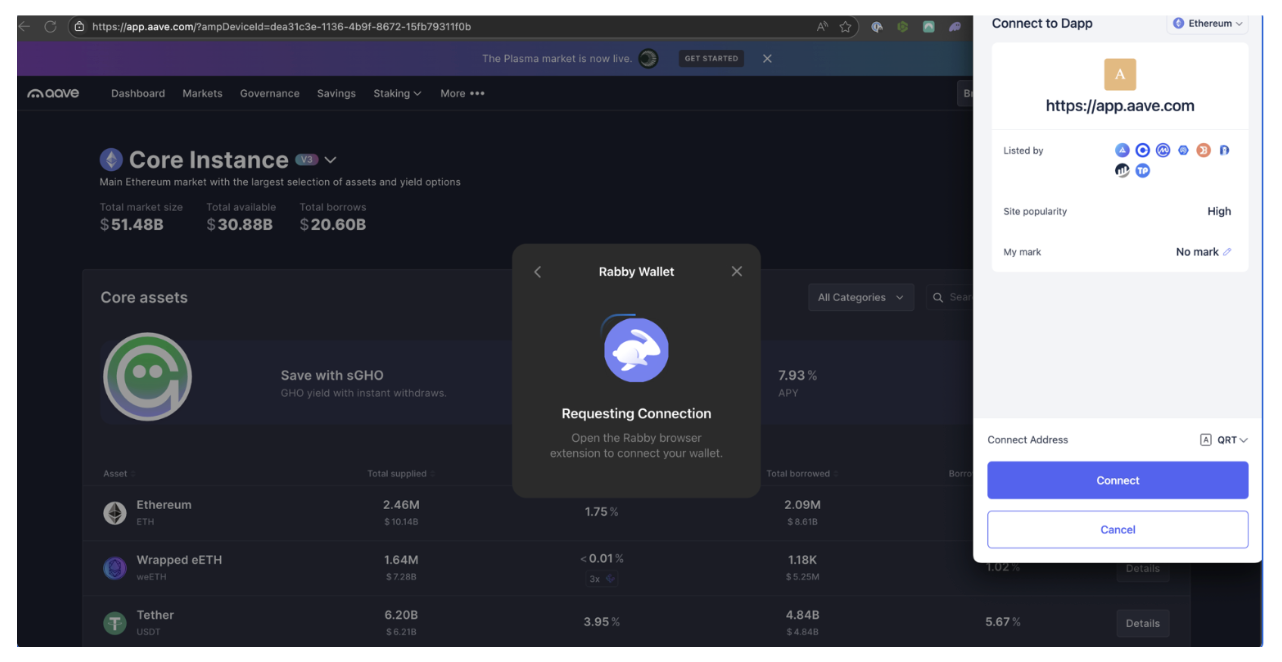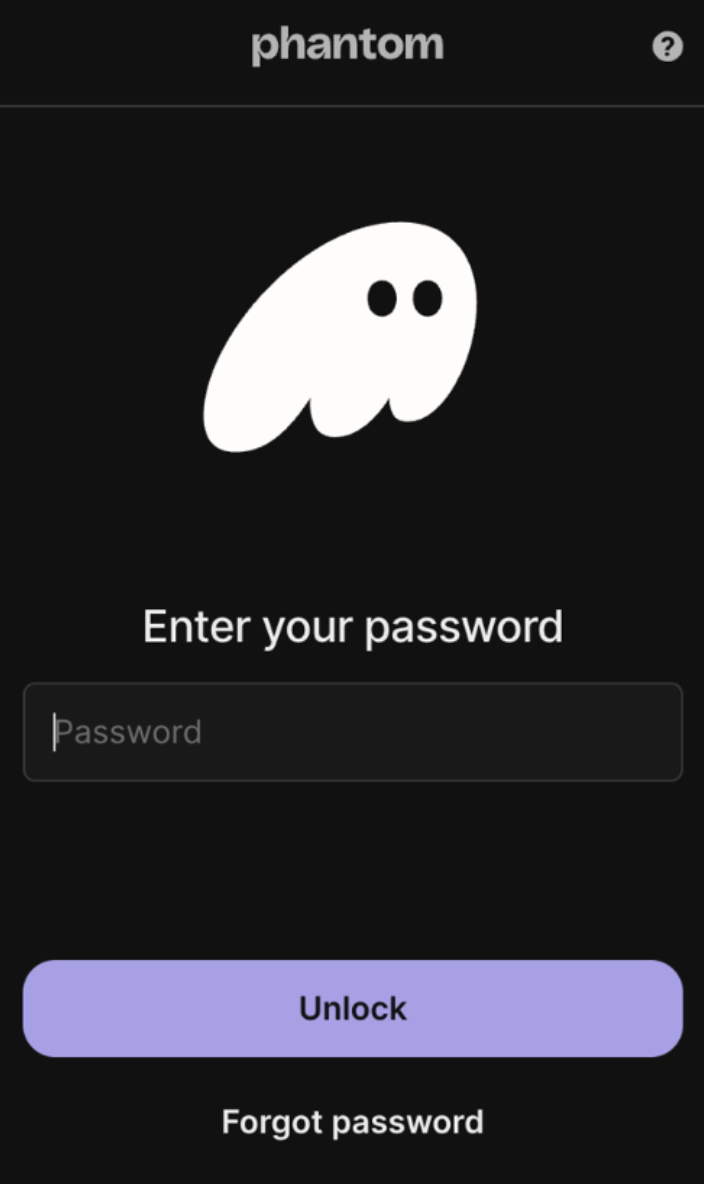Instead of logging into platforms with an email and password, you connect using your wallet. It authenticates you cryptographically, verifying your ownership without revealing personal information. It’s not just a place to store your cryptocurrency. It’s your passport to an entire ecosystem, like a key that unlocks access to decentralized finance (DeFi), non-fungible tokens (NFTs), and thousands of decentralized applications (dApps).
In short, a Web3 wallet is your key to the decentralized world: your bank, your passport, and your identity all in one.
How Do Web3 Wallets Work?
Every Web3 wallet manages two cryptographic components: a public key and a private key.
- The public key acts as your blockchain address — anyone can use it to send you assets.
- The private key is your secret digital signature, required to authorize transactions. No one else but you should possess it.
These keys are usually derived from a seed phrase, a list of 12 to 24 words that can restore your wallet on any device. In a non-custodial crypto wallet, you control that seed phrase. Lose it, and your assets are gone forever; share it, and anyone can access your funds.
Web3 wallets connect directly to blockchains through APIs or browser integrations, enabling real-time interaction with smart contracts. When you “connect your wallet” to a dApp like Uniswap, OpenSea, or Aave, you’re essentially authorizing a smart contract to perform certain actions on your behalf. Additionally, you can use Web3 wallets on mobile devices or computers, making them very user-friendly.

Types of Web3 Wallets
Web3 wallets generally fall into two main categories: hot wallets and cold wallets.
Hot wallets are connected to the internet, typically through mobile apps or browser extensions such as MetaMask, Rabby Wallet, or Coinbase Wallet. They’re convenient and ideal for users who frequently interact with dApps, NFTs, or DeFi protocols. However, being online makes them more susceptible to phishing, malware, or approval scams.
Cold wallets, also called hardware wallets, like Ledger, Tangem, or Trezor, keep your private keys offline. Transactions must be physically confirmed on the device, creating an air-gap between your keys and the internet. They’re slower to use but far more secure, making them ideal for long-term investors or anyone managing significant funds.
Some advanced setups use both: a hot wallet for daily interaction and a cold wallet for vault-level storage.
Benefits of Using a Web3 Wallet
The main appeal of a Web3 wallet lies in the philosophy it embodies: ownership. Unlike traditional banking apps or centralized exchange accounts, a Web3 wallet places users at the center of their digital finances. When you hold your own private keys, you hold your own assets — no intermediary, no institution, and no permission required. This shift toward self-custody redefines digital autonomy, giving every user direct control over their funds and interactions.
Security is another cornerstone. Because Web3 wallets rely on cryptographic protocols rather than centralized servers, users eliminate the single point of failure that hackers often exploit in traditional systems. Hardware wallets in particular create an almost impregnable barrier between private keys and online threats, while many hot wallets now integrate transaction simulation, phishing detection, and biometric verification. The result is a digital environment where protection is built into the architecture itself rather than delegated to a third party.
Lastly, Web3 wallets enhance privacy and identity control. They replace the old “email and password” model with cryptographic authentication, allowing users to connect anonymously to decentralized applications. Instead of giving up personal data to access a service, your wallet proves your legitimacy through math, not trust.
For privacy advocates and crypto-native users alike, this shift represents a quiet revolution in how we exist online — a move from surveillance-based identity to sovereignty-based presence.
Security Features of Web3 Wallets
Web3 wallets are designed with a fundamentally different security model from traditional online accounts. Instead of relying on centralization and passwords, they use cryptographic key pairs that give users direct control over their crypto assets. The private key, which is only known to the user, acts as a digital signature that authorizes transactions. On the other hand, the crypto wallet’s public key serves as its visible address on-chain.
Many Web3 wallets integrate hardware wallet compatibility, allowing private keys to remain offline in tamper-proof devices. Additional layers such as biometric signatures, multi-signature verification, and seed phrase backups help mitigate risks like phishing, device compromises, and other common vulnerabilities.
Choosing the Right Web3 Wallet
Selecting the right Web3 wallet is about understanding your relationship with the crypto ecosystem. The ideal wallet depends on how you interact on-chain — whether you trade daily on crypto exchanges, explore decentralized applications, or are aiming for long-term storage.
Compatibility is another key factor. The Web3 landscape is no longer limited to Ethereum; multi-chain support is now essential. A wallet that can seamlessly interact with ecosystems like Solana, Avalanche, or Polygon broadens your reach and reduces friction. The most advanced wallets now feature native bridges, cross-chain swaps, and automatic network detection, reflecting a shift toward an interconnected blockchain world.

Ultimately, the “right” Web3 wallet is the one that aligns with your habits, your tolerance for risk when using crypto assets, and your understanding of digital ownership.
The Future of Web3 Wallets
Web3 wallets are rapidly evolving from simple crypto vaults to universal digital identities. Expect to see integration with decentralized identity (DID) standards, zero-knowledge proofs (ZKPs) for private authentication, and seamless cross-chain operability.
As Web3 matures, wallets will likely become the gateway to a new kind of internet — one where users don’t just log in, but truly own their data, assets, and digital presence.



You must be logged in to post a comment.